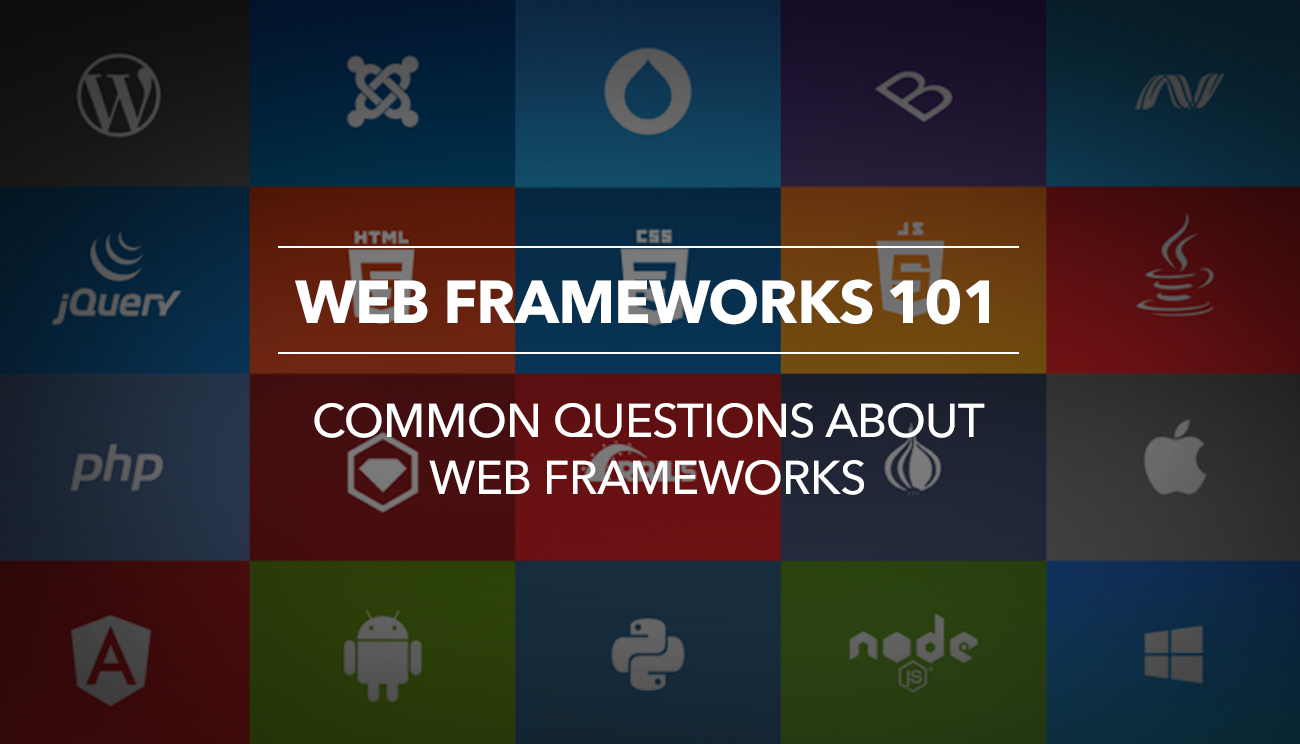Web frameworks have made life easier for developers, essentially transforming the programming industry. What are web frameworks, and how do they make an impact? Below, we answer some common questions about web frameworks, such as what are their key functions, what are the different types of frameworks, and what are their benefits?
What is a Web Framework?
A web framework is a software tool created to support the development and deployment of a web application, like a website. Every unit of a web application is comprised of code, and a web framework automates this code.
A web framework provides a basic structure and facilitates a standardised way of building the application, so the developer doesn’t need to write their own code.
Early web development required all applications to be hand-coded using HTML. This meant that only the developer of an application could make changes to it, or deploy it. In the mid-nineties, the first web frameworks and new web-specific languages started making web application development easier and more accessible.
Today, every popular programming language used today has multiple web frameworks for developers to choose from.
What are the Key Functions of Web Frameworks?
Web applications typically provide URL routing, database manipulation, templating, and basic security.
URL Routing:
A website or web application is typically required to support multiple URLS, besides the original landing page. A web framework supports the organisation of these URLs, and defines which code will be retrieved when a user clicks on a specific URL.
Database Manipulation:
All web applications store some amount of data (such as user accounts, images, video content etc) within a database. Web frameworks facilitate the manipulation and design of these databases. This helps to define how different elements on the site are structured, and how they relate to each other.
Templating:
Templating is the organisation of the data returned by the web application. It allows developers to organise their HTML output (or other types of data output) in a more comprehensive, structured way.
Security:
Web application frameworks provide a basic level of security, to help protect the application against common online security threats like hackers.
These are just a few of the key functionalities provided by web frameworks.
What are the Different Types of Web Frameworks?
Frontend:
The frontend is the user side, or client side. A frontend framework deals mostly with the external part of a web application; it’s what the end users will see when they open the application.
Backend:
The backend is the server side; the “behind the scenes” stuff that end users don’t see. There are a few different classifications of backend frameworks:
- Server side frameworks, which have limited functionality, suitable for creating simple pages and forms.
- Client side frameworks, where the work takes place inside the browser, allowing the developer to improve and implement new user interfaces.
- Cross-functional (full-stack) frameworks, which cover nearly all the needs of both the client side and the server side.
What are the Benefits of using a Web Framework?
Developers benefit from improved efficiency, affordability and support when using a web application framework.
Efficiency:
Web frameworks help to automate and simplify complex tasks. A task that would normally require hours of time and hundreds of lines of hand-written code can be completed in minutes, using the pre-built functions of the framework. This makes the development process faster and more efficient.
Affordability:
Most major web frameworks are available free of charge. A free (open source) framework can be used to build commercial websites without bridging any licensing restrictions. This helps to reduce the cost of development, both for the programmer and the client.
Support:
Web frameworks are usually supported by “how-to” documents, support teams or community forums, to help every developer get the most out of the tool. The most popular web frameworks have strong communities behind them, and these users are able to identify and report possible vulnerabilities to the support team. This adds to the security already provided by the frameworks.
Are there Disadvantages to Web Frameworks?
There are also a few limitations and drawbacks to using web frameworks. When working within a framework, developers cannot move outside the limits of its core behaviour, and must therefore be careful to choose the right framework for their specific application. In addition, developers learn to rely on the framework itself, without learning the coding language behind it. This can be limiting for professional developers looking to expand their skill set.
It’s also important to note that some frameworks (e.g. JavaScript frameworks) might slow down the performance of an application, which will be very noticeable to mobile users. With the ongoing rise in mobile Internet use, it’s important to choose a framework that can deploy an application efficiently across all devices.
Overall, the advantages of using the right web framework for an application outweigh the possible disadvantages, for clients and developers.
Learn about Web Frameworks and More Online
HyperionDev offers aspiring developers the chance to kick-start their careers, by participating in a six-month online bootcamp. These part-time courses cover full stack web development, mobile development or software engineering, with daily mentor support and free resources provided.
With this industry-leading education, you can start your future in the exciting world of online development. Register for a free trial, to get a sample of what’s on offer.


